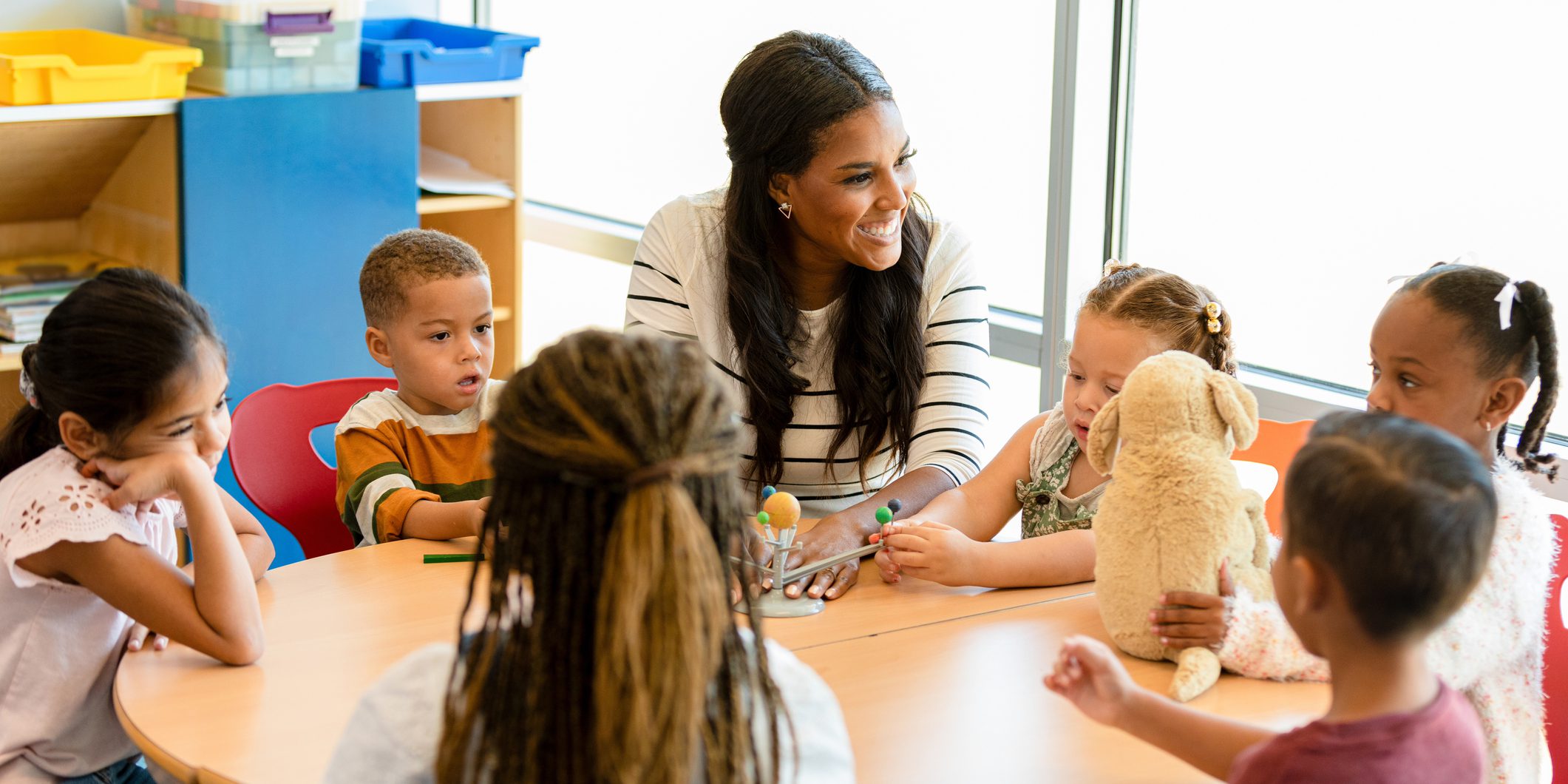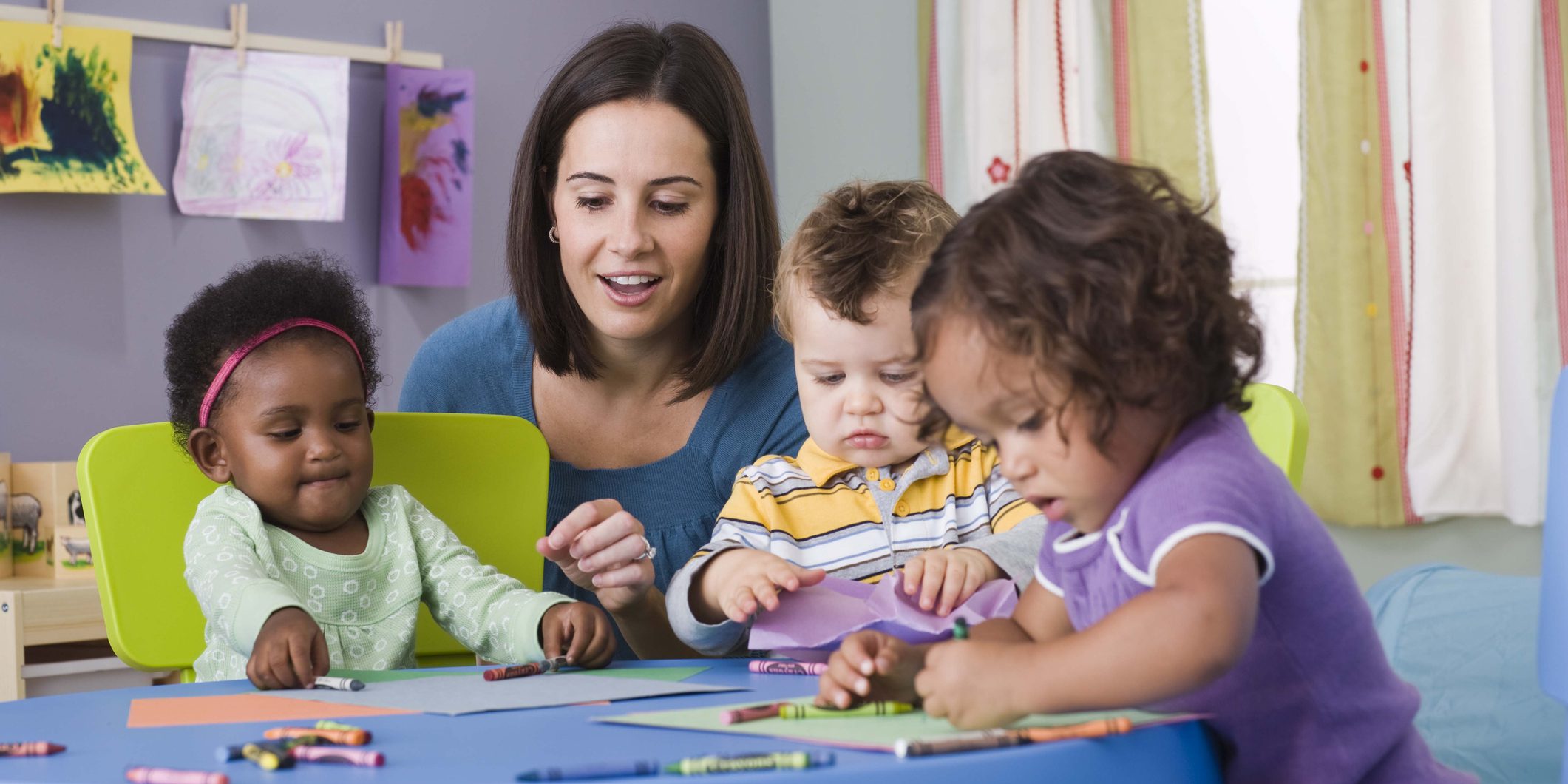The intent of this measure is to determine how consistent the teacher is at recognizing children’s feelings and providing children with positive, short, clear explanations for how they are feeling. It also takes into consideration whether the teacher uses negative reinforcement or lengthy, overly complex, or difficult explanations. Negative reinforcement means negatively addressing a child’s emotion, for example, when a child begins crying when another child takes his toy and the teacher says, “Stop crying. We don’t cry about toys in this class.” A short, positive explanation could be, “Are you angry because he took your toy away? That makes sense. Let’s figure out how we can take turns with this toy.”
Category: Category 2: Teacher-Child Interactions
Subcategory: Support for Children’s Regulation
Examples
In this section you will find videos, images, and/or documents that can be used to better understand this measure. These examples can also be used in conversations between mentors, directors, and/or teachers to discuss how the program's current practices compare to these examples.
Video Example
Book reading is a great time to discuss and make connections between feelings, actions, and events. In this video you will see a toddler teacher read a story to make a connection between the character’s actions and their feelings.
Age(s): Toddler
Video Example
This video shows teachers providing short explanations that help children of multiple age groups understand why someone is feeling a certain way.
Age(s): Toddler, Preschool, School-age
Practice Opportunities
These resources include tips, strategies, activities, or specific tools related to this measure that programs can put into practice.
Activity
While participating in a read-aloud about feelings, children name feelings and talk about what makes them feel that way. If a child says “fall down” in response to a question about what makes him sad, the teacher might provide a short explanation by saying, “Jordan feels sad when he falls down.” Identifying feelings and what caused them is an important step in developing children’s self-regulation skills.
Age(s): Toddler
Activity
In this activity, children will identify feelings by recognizing nonverbal cues. In the Guide Practice section, the teacher provides short explanations for why a child might feel happy or sad. Helping children make connections between their feelings and reason for them supports their regulation.
Age(s): Preschool, School-age
Publication
Children are learning to understand their feelings and behavior. They are learning how to express their feelings and how to show feelings in suitable ways. This article shares some ways you can help children to be successful as they learn these significant skills.
Age(s): Infant, Toddler, Preschool
Activity
Toddlers have strong feelings and often they are not able to manage them on their own. This article shares a few ideas on how to offer toddlers positive guidance that helps them build both self-control and language.
Age(s): Toddler
Publication
Early childhood teachers and providers play an important role in nurturing children’s social and emotional development. Critical to providing support is having realistic expectations of children’s development at different ages. This resource will support teachers in acknowledging children’s strong feelings and providing children with strategies to respond to them.
Age(s): Infant, Toddler, Preschool
Publication
Have you ever had a friend move away? Have you had a pet die? Have you lost someone close to you? Sad times are part of life, just as much as happy times. This article shares some ideas for working with children who are going through some sad times.
Age(s): Toddler, Preschool, School-age






